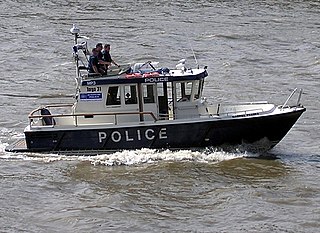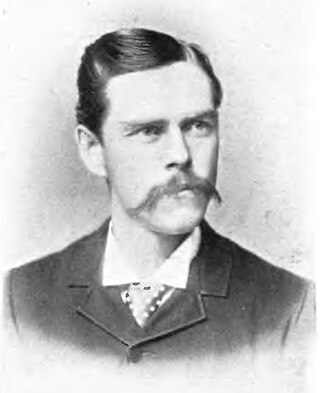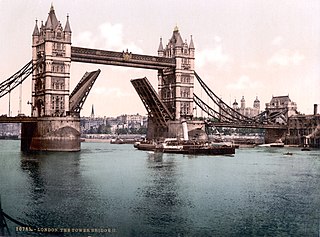Related Research Articles

A steamboat is a boat that is propelled primarily by steam power, typically driving propellers or paddlewheels. Steamboats sometimes use the prefix designation SS, S.S. or S/S or PS ; however, these designations are most often used for steamships.

SS Princess Alice, formerly PS Bute, was a British passenger paddle steamer that sank on 3 September 1878 after a collision with the collier SS Bywell Castle on the River Thames. Between 600 and 700 people died, all from Princess Alice, the greatest loss of life of any British inland waterway shipping accident. No passenger list or headcount was made, so the exact figure of those who died has never been known.

A paddle steamer is a steamship or steamboat powered by a steam engine that drives paddle wheels to propel the craft through the water. In antiquity, paddle wheelers followed the development of poles, oars and sails, where the first uses were wheelers driven by animals or humans.

London River Services Limited is a division of Transport for London (TfL), which manages passenger transport—leisure-oriented tourist services and commuter services—on the River Thames in London. It does not own or operate any boats itself, except those of the Woolwich Ferry, but licenses the services of operators.

The PS Medway Queen is a paddle driven steamship, the only mobile estuary paddle steamer left in the United Kingdom. She was one of the "little ships of Dunkirk", making a record seven trips and rescuing 7,000 men in the evacuation of Dunkirk.

Rosherville Gardens was a 19th-century pleasure garden in a disused chalk pit in Northfleet, Kent, England. After being laid out in 1837, it stood for seventy years, and was finally closed to the public just before the First World War.

The Marine Policing Unit (MPU) is the waterborne policing unit of London's Metropolitan Police Service, forming part of the Met Taskforce (MO7) within Met Operations. Its 22 vessels are responsible for waterborne policing of the River Thames in Greater London and supporting the rest of the Metropolitan Police and to the City of London Police when dealing with incidents in or around any waterway in London. A specialist underwater and confined-spaces search team carries out searches throughout the Metropolitan Police District. The unit also has 24 officers who are trained in rope access techniques and trained to carry out searches and counter-demonstrator operations at height.

A waterman is a river worker who transfers passengers across and along city centre rivers and estuaries in the United Kingdom and its colonies. Most notable are those on the River Thames and River Medway in England, but other rivers such as the River Tyne and River Dee, Wales, also had their watermen who formed guilds in medieval times. Waterman can also be a person who navigates a boat carrying passengers. These boats were often rowing boat or boats with sails. Over the years watermen acquired additional skills such as local pilotage, mooring vessels at berths, jetties, buoys, and docks, and acting as helmsman aboard large vessel.

William Denny and Brothers Limited, often referred to simply as Denny, was a Scottish shipbuilding company.

The City of Dublin Steam Packet Company was a shipping line established in 1823. It served cross-channel routes between Britain and Ireland for over a century. For 70 of those years it transported the mail. It was 'wound-up' by a select committee of the House of Lords in 1922 and finally liquidated in 1930.

James William Troup was an American steamship captain, Canadian Pacific Railway administrator and shipping pioneer.

The Baltimore Steam Packet Company, nicknamed the Old Bay Line, was an American steamship line from 1840 to 1962 that provided overnight steamboat service on Chesapeake Bay, primarily between Baltimore, Maryland, and Norfolk, Virginia. Called a "packet" for the mail packets carried on government mail contracts, the term in the 19th century came to mean a steamer line operating on a regular, fixed daily schedule between two or more cities. When it closed in 1962 after 122 years of existence, it was the last surviving overnight steamship passenger service in the United States.

River Link is a ferry, cruise boat, and bus operator, based in Devon, England. The company is owned by Dart Valley Railway plc, who also own and operate the Dartmouth Steam Railway.
The River Dart Steamboat Co Ltd (RDSC) and its predecessors, the Dartmouth Steam Packet Company and the Dartmouth and Torbay Steam Packet Company, were the major ferry and excursion boat operators on the River Dart in South Devon for 120 years, until the company's demise in 1976. The company was famous for its distinctive paddle steamers, which were a familiar sight on the river until the late 1960s.
The Bristol General Steam Navigation Company provided shipping services between Bristol and ports in southern Ireland, principally Cork from 1821 to 1980. There were also services to other destinations including ports in southern England, south Wales and France.

Steamboat services started on the Thames in around 1815 and for nearly 25 years were the main use of steam to carry passengers before the emergence of railways in the south of England. During this time at least 80 steamers are recorded in the Thames and the Steamboat Act of 1819 became the first statute to regulate the safety of the new technology for the public. Wooden boats driven by paddle-wheels, they managed during this time to establish themselves as faster and more reliable than the earlier use of sailing and rowing boats for passenger transport within the Thames estuary.
The Liverpool and North Wales Steamship Company (LNWSC) was a pleasure cruise company based in Liverpool.

SS (RMS) Snaefell (I) – the first ship in the Company's history to bear the name – was an iron paddle steamer that served with the Isle of Man Steam Packet Company until she was sold in 1875.

The General Steam Navigation Company (GSN), incorporated in 1824, was London's foremost short sea shipping line for almost 150 years. It was the oldest shipping company in the world to begin business with seagoing steam vessels.

Bywell Castle was a passenger and cargo ship that was built in 1869 by Palmers Shipbuilding and Iron Company, Jarrow, County Durham. She was involved in the Princess Alice Disaster in September 1878 in which more than 600 people died. She disappeared in February 1883 whilst on a voyage from Alexandria, Egypt to Hull, Yorkshire, United Kingdom.